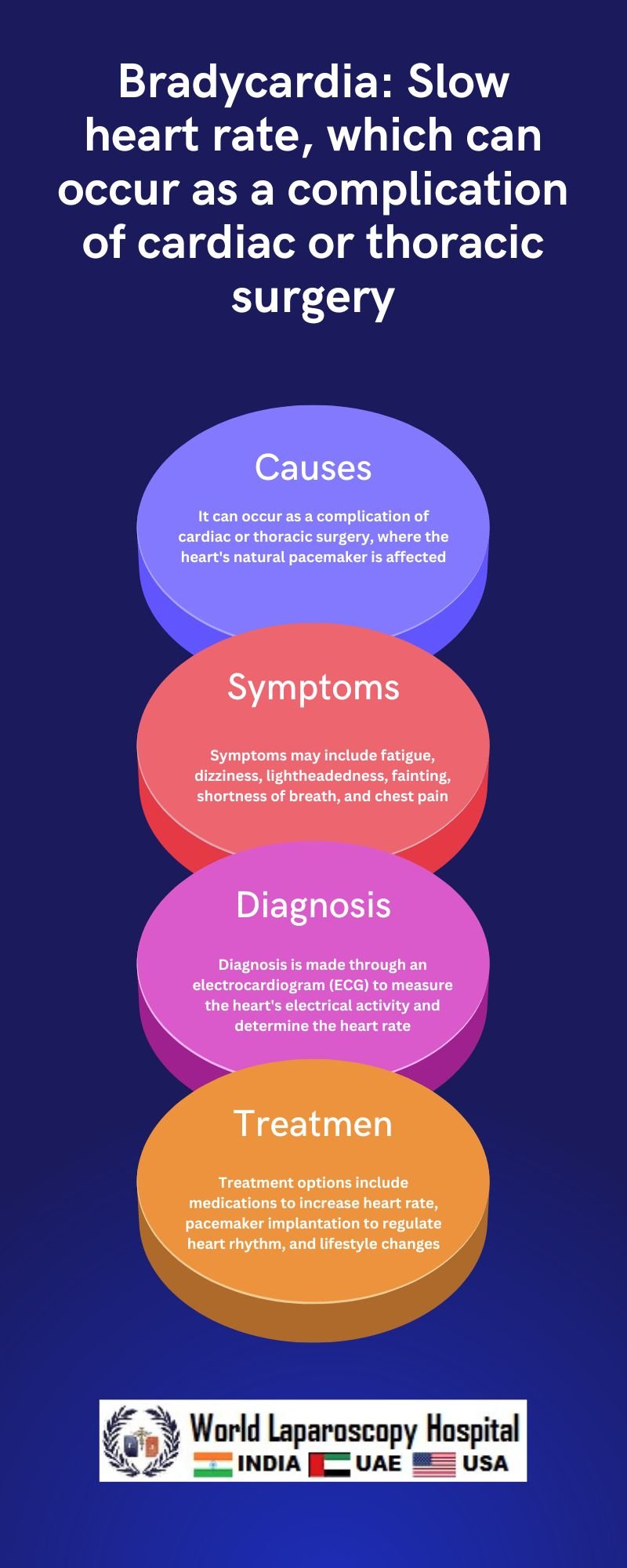Bradycardia: Slow heart rate, which can occur as a complication of cardiac or thoracic surgery
Introduction
Bradycardia, a condition characterized by a slower than normal heart rate, can be a concerning complication following cardiac or thoracic surgery. While the heart typically beats between 60 and 100 times per minute at rest, bradycardia occurs when the heart rate drops below 60 beats per minute. This condition can have various causes and implications, particularly in the context of surgical procedures.

Causes and Mechanisms
Bradycardia post-surgery can stem from several factors. The use of anesthesia, particularly drugs that affect the autonomic nervous system, can depress heart rate. Additionally, surgical manipulation of the heart or surrounding structures can disrupt the heart's natural electrical pathways, leading to a slower heart rate. Other causes may include hypothermia, electrolyte imbalances, and medication side effects.
Clinical Significance
While mild bradycardia may not cause symptoms or complications, severe bradycardia can lead to inadequate blood flow to vital organs. Symptoms such as dizziness, fatigue, shortness of breath, and chest pain may occur. In extreme cases, bradycardia can result in fainting or even cardiac arrest, necessitating prompt medical intervention.
Management and Treatment
The management of bradycardia post-surgery depends on its severity and impact on the patient's health. Mild cases may resolve on their own without intervention. However, severe bradycardia may require treatment to restore normal heart rate and function. This can include medications such as atropine or epinephrine to increase heart rate, or temporary pacing via a pacemaker until normal rhythm is restored.
Preventive Measures
To reduce the risk of bradycardia post-surgery, careful monitoring of heart rate and rhythm is essential. Anesthetic agents should be chosen judiciously, taking into account their effects on cardiac function. Close monitoring of electrolyte levels and maintaining optimal body temperature can also help prevent bradycardia.
Conclusion
Bradycardia, while often manageable, can pose serious risks following cardiac or thoracic surgery. Understanding the causes, clinical significance, and management of this condition is crucial for healthcare providers to ensure timely intervention and optimal patient outcomes. By implementing preventive measures and vigilant monitoring, the impact of bradycardia post-surgery can be minimized, enhancing the safety and success of surgical procedures.
| Older Post | Home | Newer Post |





